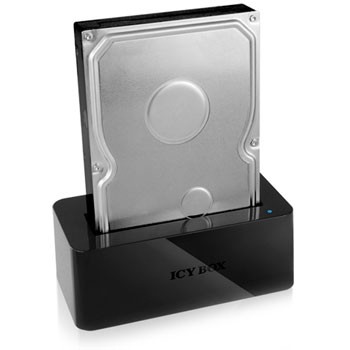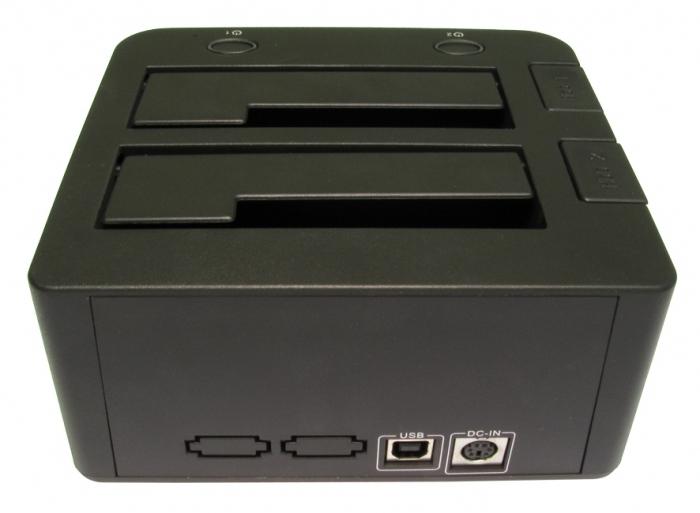Despite the advent of devices such as solid state drives, HDDs are still the main storage media, especially if their volumes are large. Most often, hard drives are installed inside the system and connected to the system board via eSATA or SATA connectors, however, there are portable drives. It is in such cases that you need a docking station for the HDD.
Such devices are needed by people using an HDD-drive instead of a flash drive. Of course, the easiest way to buy a special container for your hard drive is to provide a USB connection to the system. No problems with the connection and the owners of full-sized computers. But what do owners of mini-ATX or laptops do if an external drive is purchased and there is nowhere to connect it? The way out of this situation will be a portable docking station. To look at the device in detail, take the “cradle” for the drive, which was recently released by AgeStar.
This HDD docking station, which the manufacturer called a “docking device”, is equipped with a power supply, a connector with USB and mini-USB connectors, as well as instructions and software recorded on a CD. The design of the device is impressive. Its smooth lines and silver-black coloring give the impression of sophistication and futurism. Only the red lever, through which the hard drive is removed from the device, spoils all this beauty somewhat. The docking compartment of the “dock” is carefully covered with a spring cover, in which a small slot is made.

We are considering a docking station for HDD supports drives of two sizes. Winchesters with a 2.5-inch diagonal freely pass through the slot on the lid, and drives whose diagonal is an inch larger simply push the spring curtain. Inside the docking compartment is a SATA connector, which drives are connected to. Connecting a device to the system is very simple. After installing the HDD in the bay, you need to connect the power supply to the “dock”, start it by pressing the appropriate button, and then connect it to the computer system using a USB connector. After that, the removable hard disk icon should appear in the drive manager.

The performance of this device is quite large. In terms of copying speed, the HDD docking station is not inferior to flash drives or special USB containers for hard drives. The USB bus interferes with increasing the speed of the device. As a rule, the copy speed of these buses does not exceed 480 megabits / second, while the minimum speed of SATA connectors is 3 gigabits / second. A nice bonus to this dock was the function that provides backup of the data recorded on the HDD. To start the function, install the software and press the button located on the device.
Judging by this striking example, external docking stations are very useful devices. They are useful not only to owners of mini-computers. As a rule, a full-sized system unit is not equipped with such a device, even docking stations for SSDs are not always found in them. To remove or connect the hard drive, you have to open the case, which is not particularly convenient. From such minor inconveniences the external "dock" also saves.